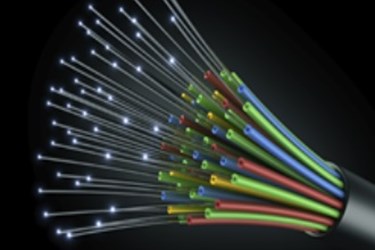Scientists Improve Modulation Bandwidth, Laser Operation Of Transistor Laser Device
By Jof Enriquez,
Follow me on Twitter @jofenriq

Engineers Nick Holonyak Jr. and Milton Feng at the University of Illinois continue to enhance the remarkable properties of the transistor laser they invented in 2004. Two of their recent studies explain how they improved the fundamental modulation bandwidth of the transistor and the laser operation of the device to make possible energy-efficient, high-speed data transfer in optical and 5G wireless communications.
Traditional diode lasers used in fiber optic cables and high-speed data transfer technologies are approaching their switching limitations. The transistor laser, which has redefined Kirchhoff's current law, is considered more capable of handling the expanded bandwidth and faster switching speeds required now, and in the future, as data usage is exploding.
Unlike a diode laser, which has two ports — an electrical input and a light output — the three-port transistor laser combines the functionality of both a conventional transistor and a laser by converting electrical input signals into two output signals: one electrical and one optical. Photons for the optical signal are generated when electrons and holes recombine in the base, an intrinsic feature of transistors. The three-port design of the device makes it ideal in harnessing the intricate physics between electrons and light.
“The fastest way for current to switch in a semiconductor material is for the electrons to jump between bands in the material in a process called tunneling,” Feng stated in a news release. “Light photons help shuttle the electrons across, a process called intra-cavity photon-assisted tunneling, making the device much faster.”
Feng, Holonyak, and graduate researchers Junyi Qiu and Curtis Wang, explained the mechanism in a paper titled Tunneling modulation of a quantum-well transistor laser, comparing their device's abilities to conventional transistors in enhancing direct modulation bandwidth and the high-speed energy-efficient data transfer.
"We have studied here the transistor laser, going beyond the original Bardeen e-h spontaneous recombination bipolar transistor (1947), with stimulated e-h recombination operating under the influence of quantum-well assistance in the base, and stimulated optical modulation under the influence of intra-cavity photon-assisted tunneling [ICPAT] at the collector," the scientists wrote. "The tunneling gain mechanism is the result of the unique transistor laser base transport properties under the influence of ICPAT and base dielectric relaxation, which yields fast carrier base transport and recombination than the original Bardeen transistor.”
A second article, titled Intra-cavity photon-assisted tunneling collector-base voltage-mediated electron-hole spontaneous-stimulated recombination transistor laser, explains how optical absorption in a p-n junction diode for a direct-gap semiconductor can be enhanced by photon-assisted tunneling in the presence of a static or dynamic electrical field.
"In the transistor laser, the coherent photons generated at the base quantum-well interact with the collector field and “assist” optical cavity electron tunneling from the valence band of the base to the conduction band states of the collector," the scientists wrote. "In the present work, we study the cavitycoherentphoton intensity effect on intra-cavity photon-assisted tunneling (ICPAT) in the transistor laser and realize photon-field enhanced optical absorption. This ICPAT in a transistor laser is the unique property of voltage (field) modulation and the basis for ultrahigh speed direct laser modulation and switching."
Feng said that these two papers — published in the Journal of Applied Physics and explaining the principles of operation for tunneling modulation of a quantum well transistor laser with current amplification and optical output via intra-cavity photon-assisted tunneling – will change the fundamental speed operation of the transistor and the laser modulation.
Further development of the device brings the researchers closer to higher speed electronics and higher performance electrical and optical integrated circuits.
